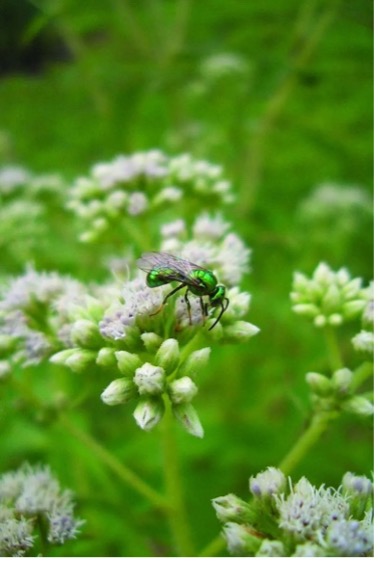
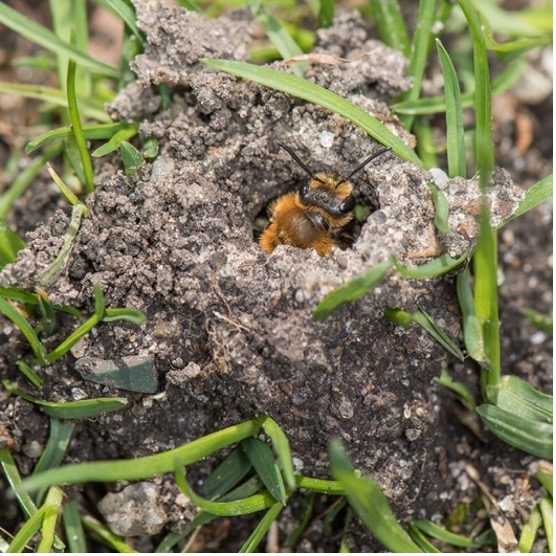
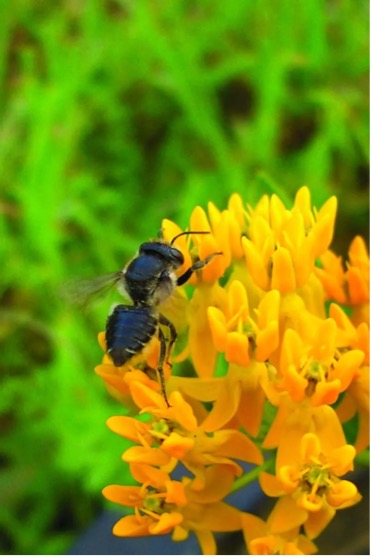
Protecting our native solitary bees is good environmental stewardship, because they are important pollinators. Solitary bees (a.k.a. ground nesting bees) include the many species of miner bees, leafcutter bees, cellophane bees, and sweat bees. Solitary bees do not live in hives. They live alone in individual nests in the ground and are only active for about 4 to 6 weeks.
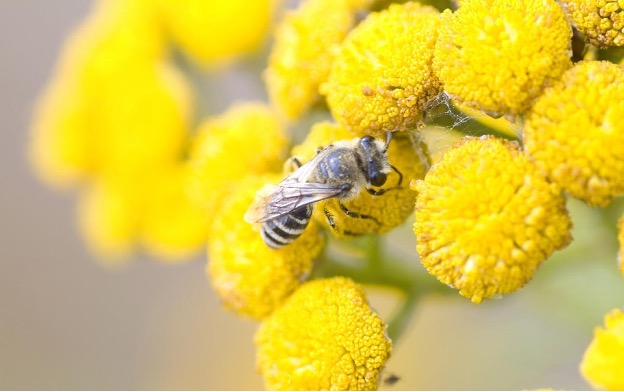
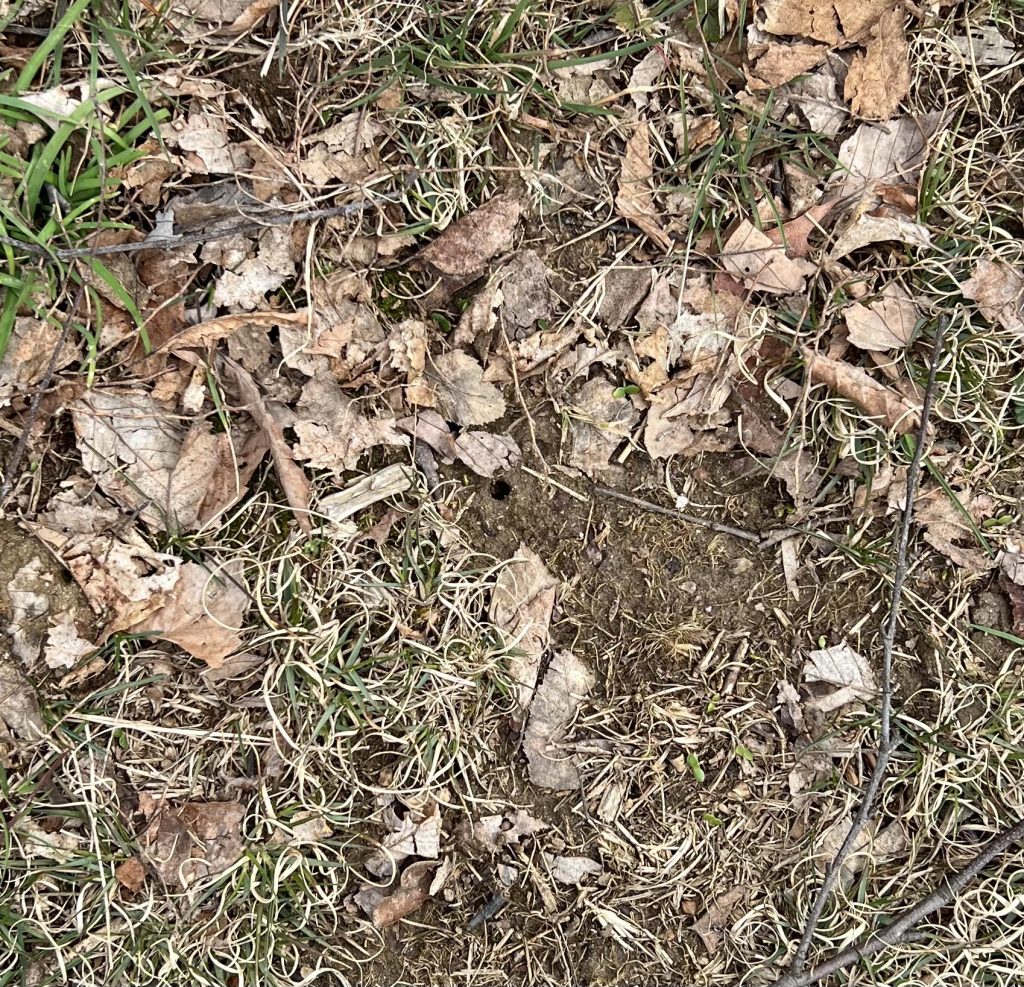
Cellophane bees are one of the first solitary bees to emerge from hibernation in early spring. Be careful not to step on their nests. (Look closely at the photo to see the small hole, which is the entrance to the nest.)
Solitary bees are not aggressive. They very rarely sting. Stings from solitary bees are practically painless, because their small stingers can’t penetrate far into the skin. I have solitary bees in my yard and have never been stung, despite inadvertently stepping on a nest.
One type of solitary bee you may notice in your yard is miner bee. Miner bee females dig individual burrows several inches deep into the soil, leaving a mound of soil above ground. After forming several cells in each nest, the female searches for pollen and nectar that she forms into a ball and places in a cell. She lays a single egg on the ball. After filling several cells in the nest with eggs, she seals the entrance and forms another nest. The eggs are left to fend for themselves.
After the eggs hatch, the larvae feed on the pollen ball and stay in the larval stage underground until the following year. Nest building activity only lasts a few weeks, since the mother bee’s life cycle soon ends. For those few weeks in spring, be careful where you step!
Spring ephemeral flowers supply nectar and pollen for solitary bees when they emerge in late March and early April. Consider planting these natives in your garden to support solitary bees. However, don’t stop at spring blooming plants. Our other native bees need food throughout the season. This chart from Penn State University shows native plants bees need from May through October.
The more you learn, the more you care. Here is more information on solitary bees.

Leave a Reply